
Ashtamudi Lake


KOLLAM

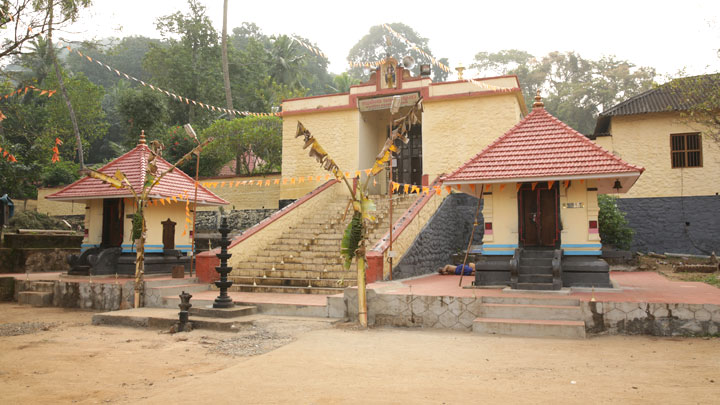
Achancoil is situated about 80 kms from Punalur town and it is an important pilgrim center.
The Sastha temple here, situated amidst dense forest. The idol of Sastha is supposed to have been installed several
centuries before the Christian Era.
Location: Veli
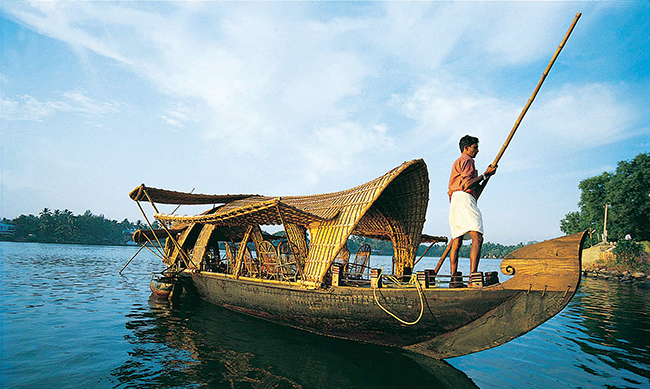
Alumkadavu located at 26 Kms from Kollam City and on the lakeside of Kollam-Alappuzha National Water Way.
The “Green Channel Back
Water Resort” at Alumkadavu makes itself a tranquil location for both foreign and Indian Tourists.
Location: Varkala
Ashtamudi Lake, in the Kollam District of the Indian state of Kerala, is the most visited backwater and lake in the state. It possesses a unique wetland ecosystem and a large palm-shaped water body, second only in size to the Vembanad estuary ecosystem of the state. Location: Ponmudi
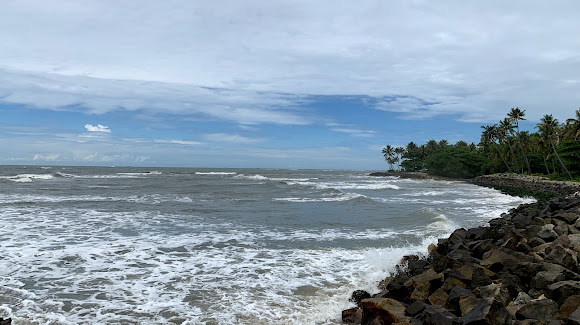
Thirumullavaram Beach, is one of the popular beaches in the city of Kollam and a tourist destination in the state of Kerala. The beach is situated at Thirumullavaram, an important neighbourhood of Kollam city.
LocationKazhakuttam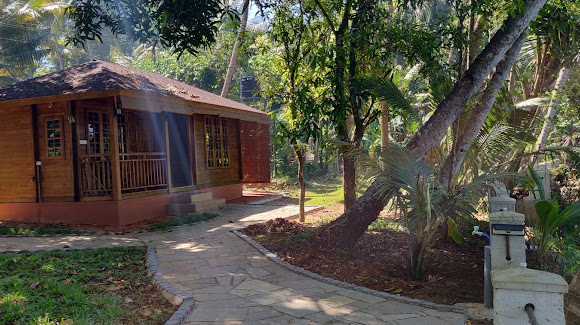
Munroe Island is a hidden pearl in the backwaters which is composed of a cluster of 8 islands.
Each of them is separated by small water channels and lakes.
Location:
Kovalam
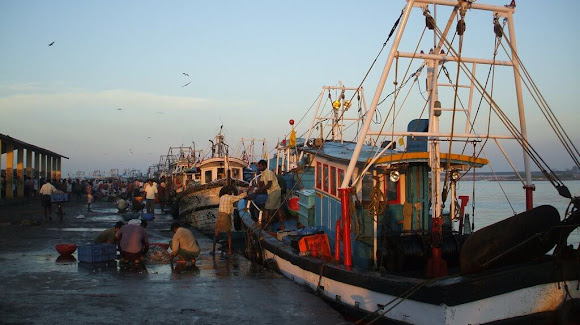
Neendakara is a suburb of Kollam city in Kerala, India. The twin harbours,
Neendakara and Shakthikulangara are located here. ...
It is about 10km away from the city center.
Location:
Thiruvananthapuram
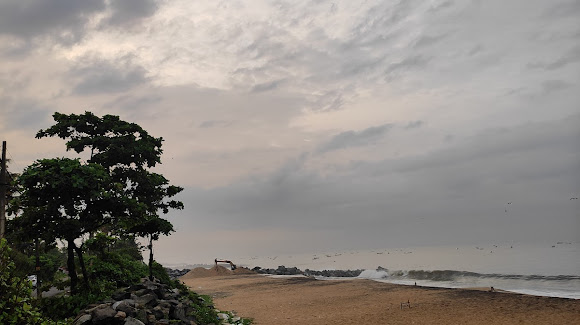
Mundakkal Beach, is one of the popular beaches in the city of Kollam and a famous tourism spot
in Kerala. The beach is situated at Mundakkal, an important neighbourhood and Cashew processing hub in Kollam.
Location:
Pazhavangadi
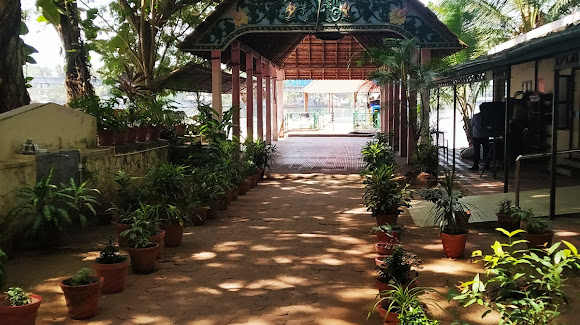
Asramam Adventure Park is an urban park in the core Kollam city of Kerala state. It was opened after 1980, on 48 acres of city-owned land. Located beside the Kerala's pride, backwaters of Ashtamudi, this place popularly known as Asramam Picnic Village. Location: Kallikad
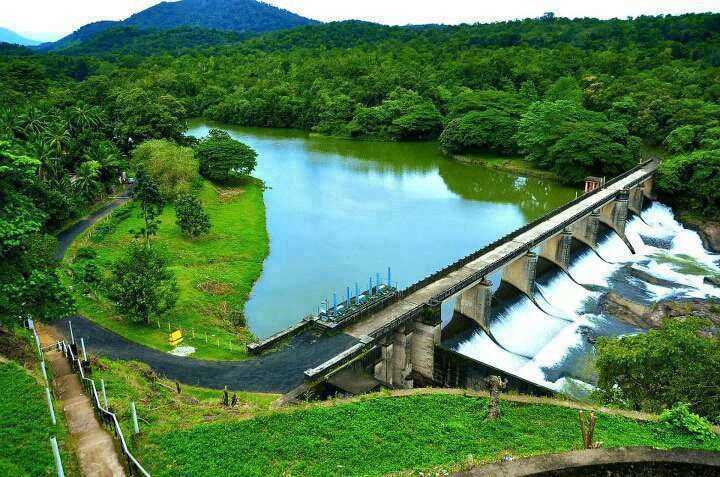
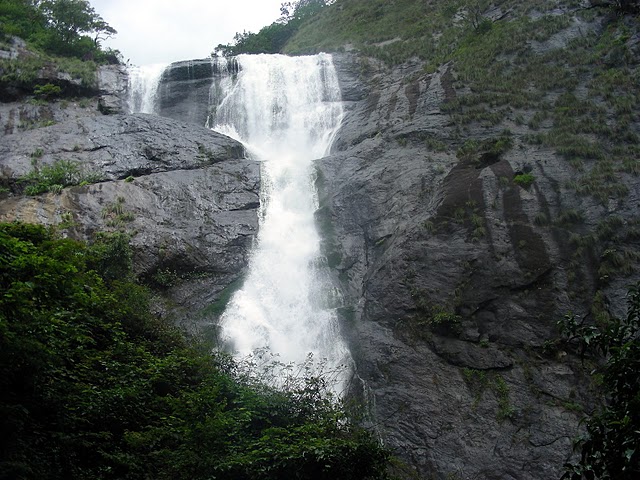
Kollam prides in a rich socio-cultural history from ancient times. It had been a hub of royal administration while being the capital of the ancient Venad province during 9th to 12th centuries C.E. Its proximity to the sea and the presence of the natural harbour at Neendakara had occasioned commercial transactions with foreigners from ancient times. References to Kollam can be found in Roman and Phoenecian accounts from the first century C.E. In later times, it finds mention in the travel writings of the Chinese, Arabs and Europeans like Muhammad Ibn Battuta, Sulaiman Al- Tajir and Marco Polo dating from 9th century onwards. The oldest name of Kollam is “Desinganadu” after the king Jayasimha from whom the Venad dynasty is supposed to have originated. The name Kollam has a long etymology bearing the marks of the place’s history spanning centuries. One theory has it that the name Kollam derives from the Sanskrit “kollam,” which means pepper, because the place had been an ancient trading and exporting centre for pepper. “Kollam” is also supposed have formed from “koyillam”, a telescoping of kovilakam (palace) and illam (brahmin house). Some believe that “Kollam” comes from the Chinese word “kolasam” meaning a big market. Yet another theory proposes that the Sanskrit “kollam” also meant a boat, and the place got its name owing to is being a port town where boats were harboured. Called the ‘Evergreen city of India’, Thiruvananthapuram is the capital of the state of Kerala. The city comprises beautiful beaches, long stretches of palm fringed shorelines, windy backwaters and historical structures. Along with its natural and historical significance, the city is also popular for its ancient temples that are renowned for their architecture making Thiruvananthapuram one of the most visited pilgrim centers of India.
The term “Kollavarsham” designating the indigenous calendar of Kerala (Malayalam Era) owes its origin to the historical fact that the calendar was commenced by the royal decree passed at Kollam by the Travancore king Udayamarthanda Varma in 825 C.E. The calendar was the outcome of the joint effort of scholars under royal patronage during that year. Kollavarsham was brought into effect in the whole of Travancore and also at the provinces of the Chera kingdom which were then under the rule of the Travancore king.In the late 17th century, the city was the capital of the Travancore kingdom that was ruled by the Varma dynasty. After forming the Travancore kingdom, Maharaja Marthanada Varma dedicated it to Lord Padmanabha, the presiding deity of Shri Padmanabhaswamy temple and named the city ‘Thiruvananthapuram’.
In 1503, the queen of Travancore invited the Portuguese, who had reached Kerala in 1498, to conduct trade with Kollam. In due course of time, the Portuguese managed to construct a fort and settlement there inaugurating the colonial history of Kollam. In the following years, the forces of the Dutch East India Company defeated the Portuguese and established their hegemony over the place in 1661. The Dutch power continued until the Travancore king Marthanda Varma defeated them in the battle of Culachel in 1741. Till this point of time, Kollam had been the capital of the Travancore kingdom. The British arrived during this juncture and in later years the East India Company established its sway over Travancore.The word ‘Thiruvananthapuram’ is derived from the Malayalam word thiru- anantha-puram, which means ‘City of Lord Ananta’. Ananta is the serpent Shesha on whom Lord Padmanabha (another form of Lord Vishnu) reclines. During the British era, the name of the city was anglicized to Trivandrum and it was the official name of the city, until 1991, when the government renamed the city to Thiruvananthapuram.
TThe first notable struggles against British supremacy was the one led by Veluthambi Dalawa, the prime minister of Travancore in the early nineteenth century. Forging an alliance with Paliathachan of Kochi, he fought several wars against the British. The historical Kundara Proclamation refers to the famous address he made to the crowd gathered at Kundara in Kollam on 16 January 1809 declaring the British to be the enemy of the people and calling upon them to fight for the land’s independence from the foreign power. The Dalawa killed himself when the British surrounded him shortly after. Since his death, Travancore came fully under British control.he Sri Padmanabhaswamy temple is one of the prominent attractions of the city. Devotees in large numbers visit the temple every year. It’s popular for its architectural splendor and historical and religious significance.
Kollam had been the ground for several events of historical importance during the early half of the twentieth century. The great heroes of Kerala’s social renaissance Sree Narayana Guru and Ayyankali had found Kollam a congenial place to work among the communally marginalized people of those times. In 1918, a meeting of the Ezhava community was held at Mulamkadakom in Kollam to demand entry for the lower castes to Hindu temples. On 17 December1932, Kollam witnessed a meeting of the members of the Ezhava, Muslim and Christian communities to demand for adequate representation for their members in the legislature. This movement later developed into the historic “Nivarthana Agitation” of which some of the frontline leaders came from Kollam namely C. Kesavan, P.K. Kunju and N.V. Joseph. One of the tense chapters in India’s freedom struggle, the Kadakkal Revolt of 1938, took place here. It was a farmers’ agitation against unjust taxes and tolls which later grew into an armed struggle against government forces. Consequently, five men were sentenced to death and many others to life imprisonment by the authorities.Now the IT hub of Kerala, Thiruvananthapuram is also a major academic hub; it houses several educational and scientific institutions like Vikram Sarabhai Space Centre (VSSC) and the Indian Institute of Space Science and Technology (IIST).
The Kottankulangara Devi Temple is a Hindu temple to the goddess Durga Bhagavathy or Aadi Shakthi, the supreme mother of power, located in the village of Chavara, Kerala, India.
One of the most celebrated and famous snake boat races in Kerala, the President’s Trophy Boat Race is a spectacular event held in November. The calm waters of the Ashtamudi Lake become a racecourse when the majestic snake boats slice through the waters to lay claim for the prized trophy.
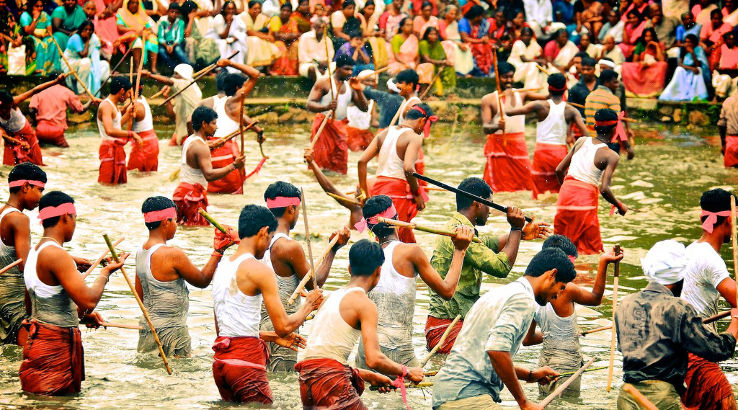
Oachira Kali is a festival that takes place in June in Oachira, Kerala, India. ... It is a mock battle between two groups, to the sound of drums, in a waterlogged ...